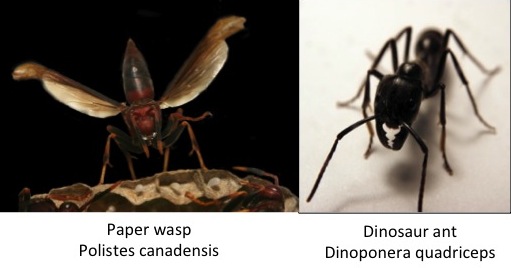

The evolution of group living is one of the major transitions shaping the natural world, from multicellular organisms to eusocial insects. It relies on the emergence of alternative phenotypes, which cooperate to form a new, higher-level functioning unit - the society. Alternative phenotypes arise through differential expression of shared genes, but our understanding of the genetic mechanisms underlying the emergence of these alternative phenotypes remains poorly understood.
Dinosaur ant Dinoponera quadriceps and the paper wasp Polistes canadensis have similar cast specific phenotypes at the behavioural level - simple eusocial societies. At the evolutionary level these two species are different - Polistes are ancestrally primitively eusocial and Dinoponera evolved from a highly eusocial ancestral. Comparisons of the molecular basis of social behaviour in these species, and the mechanisms and processes regulating them, provide a unique opportunity to understand how evolution replicates phenotypic diversity through independent and contrasting origins.